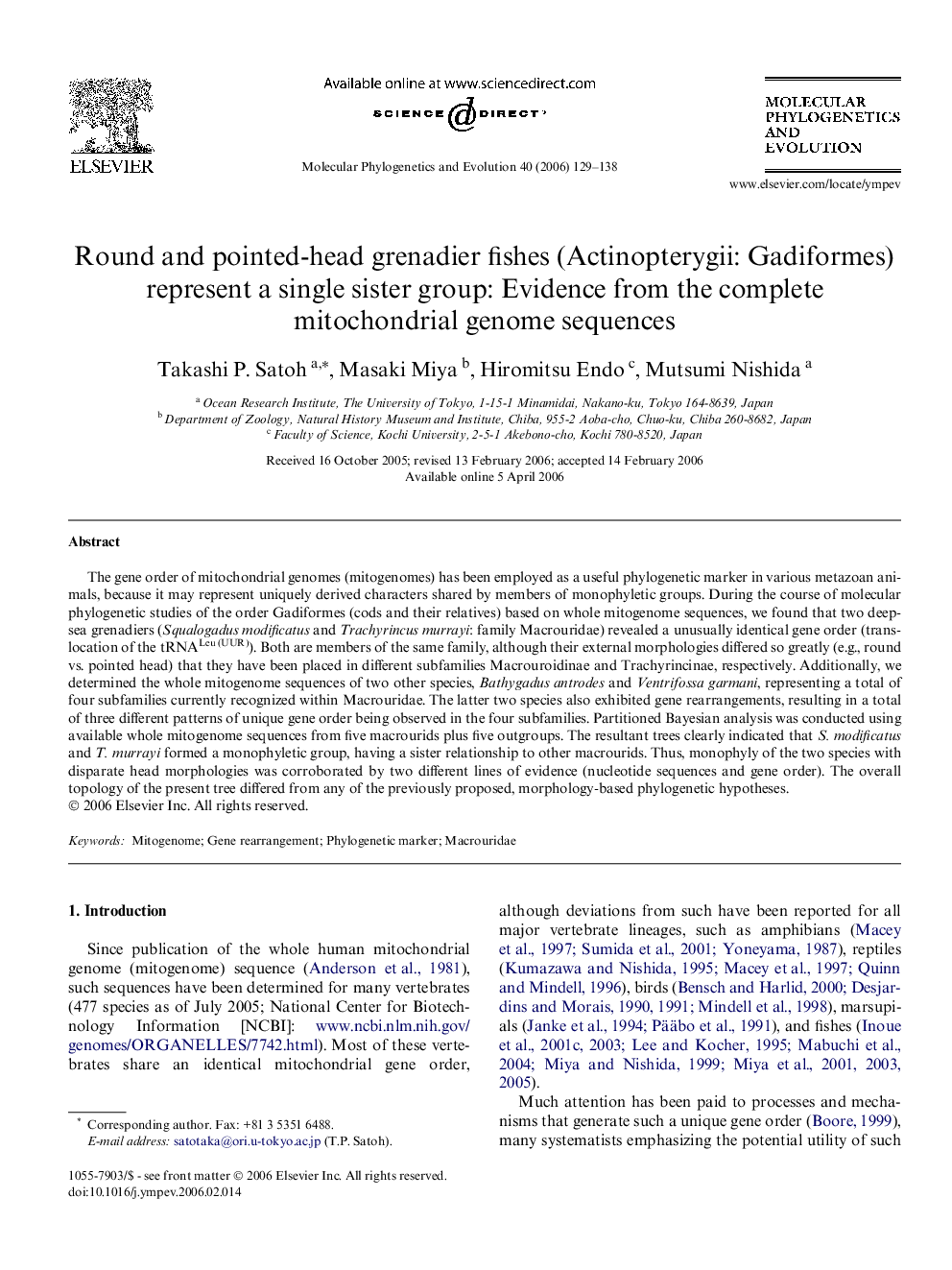| کد مقاله | کد نشریه | سال انتشار | مقاله انگلیسی | نسخه تمام متن |
|---|---|---|---|---|
| 2835940 | 1164358 | 2006 | 10 صفحه PDF | دانلود رایگان |

The gene order of mitochondrial genomes (mitogenomes) has been employed as a useful phylogenetic marker in various metazoan animals, because it may represent uniquely derived characters shared by members of monophyletic groups. During the course of molecular phylogenetic studies of the order Gadiformes (cods and their relatives) based on whole mitogenome sequences, we found that two deep-sea grenadiers (Squalogadus modificatus and Trachyrincus murrayi: family Macrouridae) revealed a unusually identical gene order (translocation of the tRNALeu (UUR)). Both are members of the same family, although their external morphologies differed so greatly (e.g., round vs. pointed head) that they have been placed in different subfamilies Macrouroidinae and Trachyrincinae, respectively. Additionally, we determined the whole mitogenome sequences of two other species, Bathygadus antrodes and Ventrifossa garmani, representing a total of four subfamilies currently recognized within Macrouridae. The latter two species also exhibited gene rearrangements, resulting in a total of three different patterns of unique gene order being observed in the four subfamilies. Partitioned Bayesian analysis was conducted using available whole mitogenome sequences from five macrourids plus five outgroups. The resultant trees clearly indicated that S. modificatus and T. murrayi formed a monophyletic group, having a sister relationship to other macrourids. Thus, monophyly of the two species with disparate head morphologies was corroborated by two different lines of evidence (nucleotide sequences and gene order). The overall topology of the present tree differed from any of the previously proposed, morphology-based phylogenetic hypotheses.
Journal: Molecular Phylogenetics and Evolution - Volume 40, Issue 1, July 2006, Pages 129–138